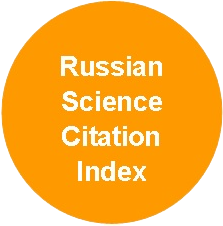Лесоводственные особенности деревьев лиственницы европейской разных классов Крафта в лесных культурах
DOI:
https://doi.org/10.37482/0536-1036-2025-4-9-19Ключевые слова:
лесные культуры, лиственница европейская, классы Крафта, редукционное число, почвенно-световой прирост, относительная высотаАннотация
Проведено сравнительное изучение лесоводственных особенностей роста деревьев различных классов Крафта в лесных культурах лиственницы европейской (Larix decidua Mill.), произрастающих в центре Русской равнины в лесорастительных условиях сосняка-черничника (Pinetum myrtillosum). Актуальность работы обусловлена отсутствием подобных исследований для искусственных дендроценозов на протяжении 25 лет. Рассмотрена динамика редукционных чисел, почвенно-световых приростов и относительных высот деревьев разных классов Крафта на стадии зрелости насаждения (124–149 лет). Установлено, что в возрасте 124, 134 и 149 лет редукционные числа и относительные высоты строго дифференцированы в разрезе разных классов Крафта и эта особенность сохраняется на протяжении 25 лет. При этом со 124 до 149 лет редукционные числа и относительные высоты у разных классов Крафта изменяются мало, а для деревьев I и II классов Крафта они практически стабильны. Деревья III класса Крафта наиболее близки к среднему диаметру и средней высоте всего насаждения: по диаметру они отличаются на 7 %, по высоте – на 2 %. Лесоводственной особенностью деревьев разных классов Крафта является не только специфика их рангового положения, но и характер функциональной реализации почвенно-световых приростов, как по диаметру, так и по высоте, в разные периоды времени. Например, во временной промежуток 124–134 года почвенно-световой прирост по диаметру у деревьев V класса Крафта был меньше по сравнению с I классом в 3,3 раза, а по высоте – в 3,9 раза. В период 142–149 лет разница в почвенно-световом приросте в высоту не изменилась, а по диаметру увеличилась до 4,3 раза. В динамике почвенно-световые приросты и относительные высоты показывают депрессию ростовых процессов у деревьев V класса Крафта, которые становятся кандидатами на отпад. В целом расчленение насаждения на классы Крафта отражает функциональную иерархию и показывает на существование ранговых структур дендроценоза и их устойчивость во времени.
Скачивания
Библиографические ссылки
Абатуров А.В. Толерантность основных лесообразующих пород в условиях рекреационного лесопользования // Динамика и устойчивость рекреационных лесов: сб. ст. М.: Т-во науч. изд. КМК, 2006. C. 25–65. Abaturov A.V. Tolerance of the Main Forest-Forming Species in the Conditions of Recreational Forest Management. Dynamics and Sustainability of Recreational Forests: Collection of Articles. Moscow: KMK Scientific Press Ltd., 2006, pp. 25–65. (In Russ.).
Бабич Н.А., Мерзленко М.Д., Евдокимов И.В. Фитомасса сосны и ели в Европейской части России. Архангельск: АГТУ, 2004. 112 с. Babich N.A., Merzlenko M.D., Evdokimov I.V. Phytomass of Pine and Spruce in the European part of Russia. Arkhangelsk, Arkhangelsk State Technical University Publ., 2004. 112 p. (In Russ.).
Брынцев В.А., Лавренов М.А. Оценка результатов интродукции видов рода Larix Mill. в центр Европейской части России // Хвойные бореал. зоны. 2019. Т. 37, No 6. С. 385–395. Bryntsev V.A., Lavrenov M.A. Assessment of Results of Introduction of Species of the Genus Larix Mill. in the Centre of the European Part of Russia. Khvojnye boreal’noj zony = Conifers of the Boreal Area, 2019, vol. 37, no. 6, pp. 385–395. (In Russ.).
Брынцев В.А., Лавренов М.А., Коженкова А.А. Исследование морфологических признаков и посевных качеств семян видов рода Larix Mill. в условиях интродукции // Изв. вузов. Лесн. журн. 2022. No 2. С. 26–38. (In Russ.). Bryntsev V.A., Lavrenov M.A., Kozhenkova A.A. Studying Morphological Characteristics and Sowing Qualities of Seeds of Species of the Genus Larix Mill. in the Conditions of Introduction. Lesnoy Zhurnal = Russian Forestry Journal, 2022, no. 2, pp. 26–38. (In Russ.). https://doi.org/10.37482/0536-1036-2022-2-26-38
Ирошников А.И. Лиственницы России. Биоразнообразие и селекция. М.: ВНИИЛМ, 2004. 182 с. Iroshnikov A.I. Larches of Russia. Biodiversity and Breeding. Moscow, All-Russian Research Institute for Silviculture and Mechanization of Forestry Publ., 2004. 182 p. (In Russ.).
Карасев Н.Н. Повышение продуктивности лесов Подмосковья путем интродукции лиственницы: автореф. дис. ... канд. с.-х. наук. Москва, 2009. 20 с. Karasev N.N. Increasing the Productivity of Forests in the Moscow Region through the Introduction of Larch: Cand. Agric. Sci. Diss. Abs. Moscow, 2009. 20 p. (In Russ.).
Качанова Ю.П. Исследование особенностей семеношения лиственниц в условиях северо-запада России // Соврем. науч. исследования и инновации. 2017. No 5 (73). С. 32. Kachanova Yu.P. Studying the Features of Larch Seed Formation in the North-West of Russia. Sovremennyye nauchnyye issledovaniya i innovatsii = Modern Scientific Researches and Innovations, 2017, no. 5 (73), p. 32. (In Russ.).
Коженкова А.А., Мерзленко М.Д. Географические культуры лиственницы в Серебряноборском опытном лесничестве // Лесн. комплекс: состояние и перспективы развития: сб. по итогам XVII Междунар. науч.-техн. конф. No 49. Брянск, 2017. С. 99–101. Kozhenkova A.A., Merzlenko M.D. Geographical Cultures of Larch in the Serebryanobor Experimental Forestry. Forestry Complex: Status and Development Prospects: Collection of the Results of the XVII International Scientific and Technical Conference. Bryansk, 2017, no. 49, pp. 99–101. (In Russ.).
Логунов Д.В. Экологические особенности роста и развития представителей рода лиственница (Larix Mill.) в условиях антропогенных ландшафтов Нижегородской области: дис. ... канд. биол. наук. Нижний Новгород, 2002. 287 с. Logunov D.V. Ecological Features of Growth and Development of Representatives of the Genus Larch (Larix Mill.) in the Conditions of Anthropogenic Landscapes of the Nizhny Novgorod Region: Cand. Biol. Sci. Diss. Nizhniy Novgorod, 2002. 287 p. (In Russ.).
Маслаков Е.Л. Формирование сосновых молодняков. М.: Лесн. пром-сть, 1984. 168 с. Maslakov E.L. Formation of Young Pine Stands. Moscow, Lesnaya promyshlennost’ Publ., 1984. 168 p. (In Russ.).
Медведев Я.С. К учению о влиянии света на развитие древесных стволов // Лесн. журн. 1884. Вып. 5 и 6. С. 326–373. Medvedev Ya.S. On the Doctrine of the Influence of Light on the Development of Tree Stems. Lesnoy Zhurnal = Russian Forestry Journal, 1884, iss. 5 and 6, pp. 326–373. (In Russ.).
Мелехов И.С. Лесоводство. 2-е изд. М.: МГУЛ, 2002. 320 с. Melekhov I.S. Forestry: 2nd ed. Moscow, Moscow State Forest University Publ., 2002. 320 p. (In Russ.).
Мельник Л.П. Естественное возобновление лиственницы европейской за пределами ареала при минимальном количестве семенников // Лесн. вестн. / Forestry Bulletin. 2021. Т. 25, No 6. С. 39–44. Melnik L.P. Natural Regeneration of European Larch Outside Natural Area with Minimum of Seed Trees. Lesnoy Vestnik = Forestry Bulletin, 2021, vol. 25, no. 6, pp. 39–44. (In Russ.). https://doi.org/10.18698/2542-1468-2021-6-39-44
Мельник П.Г., Мерзленко М.Д., Лобова С.Л. Результат выращивания климатипов лиственницы в географических культурах северо-восточного Подмосковья // Вестн. Алтайск. гос. аграр. ун-та. 2016. No 2 (136). С. 62–67. Melnik P.G., Merzlenko M.D., Lobova S.L. The Result of Growing Larch Climatypes in Geographical Cultures of the North-Eastern Moscow Region. Vestnik Altajskogo gosudarstvennogo agrarnogo universiteta = Bulletin of Altai State Agricultural University, 2016, no. 2 (136), pp. 62–67. (In Russ.).
Мерзленко М.Д. Эталон деятельности лесовода. М.: Изд. дом Рученькиных, 2022. 174 с. Merzlenko M.D. The Standard of Forestry Activity. Moscow, Ruchen’kin Publ. House, 2022. 174 p. (In Russ.).
Мерзленко М.Д., Коженкова А.А., Брынцев В.А. Лесокультурно-лесоводственные особенности уникального типа лесных культур лиственницы европейской. // Вестн. Алтайск. гос. аграр. ун-та. 2016. No 12 (146). С. 50–54. Merzlenko M.D., Kozhenkova A.A., Bryntsev V.A. Silvicultural Features of the Unique Type of Forest Crops of European Larch. Vestnik Altajskogo gosudarstvennogo agrarnogo universiteta = Bulletin of Altai State Agricultural University, 2016, no. 12 (146), pp. 50–54. (In Russ.).
Мерзленко М.Д., Мельник П.Г., Коженкова А.А. Результаты выращивания климатипов лиственницы в географических культурах Западного Подмосковья // Вестн. Алтайск. гос. аграрн. ун-та. 2018. No 1 (159). С. 72–77. Merzlenko M.D., Melnik P.G., Kozhenkova A.A. Growth Results of Larch Climotypes in Geographical Plantations of the Western Part of the Moscow Region. Vestnik Altajskogo gosudarstvennogo agrarnogo universiteta = Bulletin of Altai State Agricultural University, 2018, no. 1 (159), pp. 72–77. (In Russ.).
Морозов Г.Ф. Основания учения о лесе: лекции, читанные в Таврическом Университете. Репринтное издание. М.: ГОУ ВПО МГУЛ, 2011. 330 с. Morozov G.F. Foundations of the Doctrine of Forest: Lectures Given at the Taurida University: reprint. ed. Moscow, Moscow State Forest University Publ., 2011. 330 p. (In Russ.).
Орлов М.М. Лесная таксация. Л.: Ленинградск. лесн. ин-т, 1925. 510 с. Orlov M.M. Forest Inventory. Leningrad, Leningrad Forestry Institute Publ., 1925. 510 p. (In Russ.).
Редько Г.И., Мерзленко М.Д., Бабич Н.А. Лесные культуры. СПб.: ГЛТА, 2005. 366 с. Red’ko G.I., Merzlenko M.D., Babich N.A. Forest Crops. St. Petersburg, State Forestry Academy Publ., 2005. 366 p. (In Russ.).
Рубцов М.В., Глазунов Ю.Б., Николаев Д.К. Лиственница европейская в центре Русской равнины // Лесн. хоз-во. 2011. No 5. С. 26–29. Rubtsov M.V., Glazunov Yu.B., Nikolaev D.K. European Larch in the Centre of the Russian Plain. Lesnoe khozyajstvo, 2011, no. 5, pp. 26–29. (In Russ.).
Соболев А.Н. Плодоношение лесных насаждений // Плодоношение лесных насаждений. СПб.: Типо-литография М.П. Фроловой, 1908. С. 1–62. (In Russ.). Sobolev A.N. Fruiting of Forest Plantations. Fruiting of Forest Plantations. St. Petersburg, M.P. Frolova Typography, 1908, pp. 1–62. (In Russ.).
Abaimov A.P., Barzut V.M., Berkutenko A.N., Buitink J., Martinsson O., Milyutin L.I., Polezhaev A., Putenikhin V.P., Takata K. Seed Collection and Seed Quality of Larix spp. from Russia: Initial Phase on the Russia-Scandinavian Larch Project. Eurasian Journal of Forest Research, 2002, no. 4, pp. 39–49.
Bryntsev V.A., Lavrenov M.A., Vasiliev S.B., Savchenkova V.A., Nikitin V.F. Comparative Analysis of Variability of Morphological Characteristics of European and Japanese Larches with Their Hybrids. IOP Conference Series: Earth and Environmental Science, 2020, vol. 574, art. no. 012007. https://doi.org/10.1088/1755-1315/574/1/012007
Burschel P., Huss J. Grundriß des Waldbaus. Berlin: Parey Buchverlag, 1977. 487 p. (In Germ.).
Danek M., Chuchro M., Danek T. Extreme Growth Reaction of Larch (Larix decidua Mill.) from the Polish Sudetes and Carpathians: Spatial Distribution and Climate Impact. Trees, 2021, vol. 35, pp. 211–229. https://doi.org/10.1007/s00468-020-02029-z
Dušek D., Novák J. The Effect of Thinning on the Growth of a Substitute Forest Stand of European Larch (Larix decidua Mill.). Zprávy Lesnického Výzkumu, 2024, vol. 69, no. 2, pp. 136–142. (In Czech with Eng. Summary). https://doi.org/10.59269/zlv/2024/2/728
Fedorkov A. Stem Growth and Quality of Six Provenances of Larix sukaczewii Dyl. and Larix sibirica Ledeb. in a Field Trial Located in North-West Russia. Baltic Forestry, 2017, vol. 23, no. 3 (46), pp. 603–607.
Izworska K., Muter E., Fleischer P., Zielonka T. Delay of Growth Release after a Windthrow Event and Climate Response in a Light‑Demanding Species (European Larch Larix decidua Mill.). Trees, 2022, vol. 36, pp. 427–438. https://doi.org/10.1007/s00468-021-02218-4
Kraft G. Beiträge zur Lehre von den Durchforstungen, Schlagstellungen und Lichtungshieben. Hannover, Klindworth’s Verlag, 1884. 148 p. (In Germ.).
Lewandovski A. Modrew Polski (L. decidua Mill. subsp. polonica (Racib.) Domin): Struktura Genetyczua Populacji oraz jego Pochodzenie w Swetle Badan Izoenzymowych. Kornik, 1995. 72 p. (In Pol.).
Pfalz W. Die Europäische Lärche in Zentrum der Russischen Tiefebene. AFZ – der Wald, 2014, no. 3, pp. 23–25. (In Germ.).
Slobodník B., Guttenberger H. Zygotic Embryogenesis and Empty Seed Formation in European Larch (Larix decidua Mill.). Annals of Forest Science, 2005, vol. 62, no. 2, pp. 129–134. https://doi.org/10.1051/forest:2005004
Szaban Ja., Kowalkowski W., Łacka A., Karaszewski Z. Wood Density in European Larch (Larix decidua Mill.) from Selected Provenances Grown at the Siemianice Forest Experimental Station. Drewno = Wood, 2021, vol. 64, no. 207, pp. 27–41. https://doi.org/10.12841/wood.1644-3985.378.08
Szymański N., Wilczyński S. Radial Growth Response of European Larch Provenances to Interannual Climate Variation in Poland. Forests, 2021, vol. 12, no. 3, art. no. 334. https://doi.org/10.3390/fl2030334
Teodosiu M., Mihai G., Ciocîrlan E., Curtu A.L. Genetic Characterisation and Core Collection Construction of European Larch (Larix decidua Mill.) from Seed Orchards in Romania. Forests, 2023, vol. 14, no. 8, art. no. 1575. https://doi.org/10.3390/f14081575
Загрузки
Опубликован
Как цитировать
Выпуск
Раздел
Лицензия

Это произведение доступно по лицензии Creative Commons «Attribution» («Атрибуция») 4.0 Всемирная.












